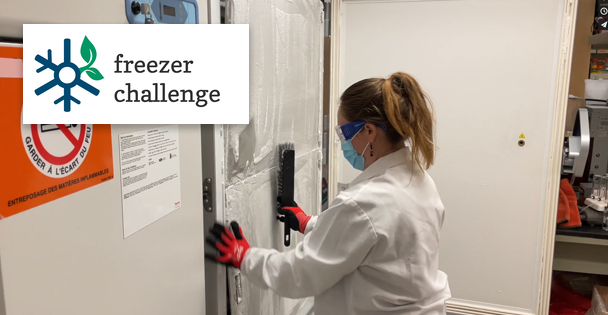The University of Miami’s Office of Sustainability challenges you to participate in the Freezer Challenge! The Freezer Challenge is a cold storage competition for laboratories run by the non-profit organizations My Green Lab and the International Institute for Sustainable Laboratories (I2SL). 
The challenge occurs every Spring semester and is designed to encourage all labs to recognize the benefits of good cold storage management. Labs also earn points for sharing information about their own best practices regarding sample storage and inventory. Awards will be given to those who have done the most to save energy and improve their sample storage.
Although the 2023 International Freezer Challenge does not begin until January 1st, 2023, you can pre-register using this form. When the Challenge launches, you will be emailed a participant score sheet and further instructions within several days.
Am I Eligible to Participate?
If your lab uses ultra-ultra low temperature freezers (-150 °C), ultra-low temperature freezers (-70 °C to -80 °C), lab freezers (-40 °C to -20 °C), refrigerators, or cold rooms, you can earn points in the Freezer Challenge by taking any combination of actions listed below. In the majority of situations, earn 1 point for each action taken per cold storage unit. You can learn more about the cold storage best practices included in the Freezer Challenge here. The best practices are grouped into four categories:
- Good Management Practices
- Temperature Tuning
- Retirements & Upgrades
- Cutting-Edge Practices
What are the Benefits of Participating?
This challenge is designed to encourage laboratories to recognize the benefits of good cold storage management, such as:
- Removal of unneeded, unwanted, or non-viable samples from refrigeration units
- Reduced costs associated with maintaining refrigeration units.
- Improved researcher access to laboratory samples and reagents.
- Development of ongoing cold storage management practices that support energy efficiency and maximize space utility.




